Is My Dog Happy With His Life? [Contentment Tips]
As a loving dog owner, one of the most common questions we ask ourselves is, “Is my dog happy with his life?” Our furry friends can’t communicate their feelings like we do, but their body language and behaviors can provide clues about their emotional state.
It’s essential to keep an eye out for these signs because a happy dog is not only more enjoyable to be around but also healthier in the long run.
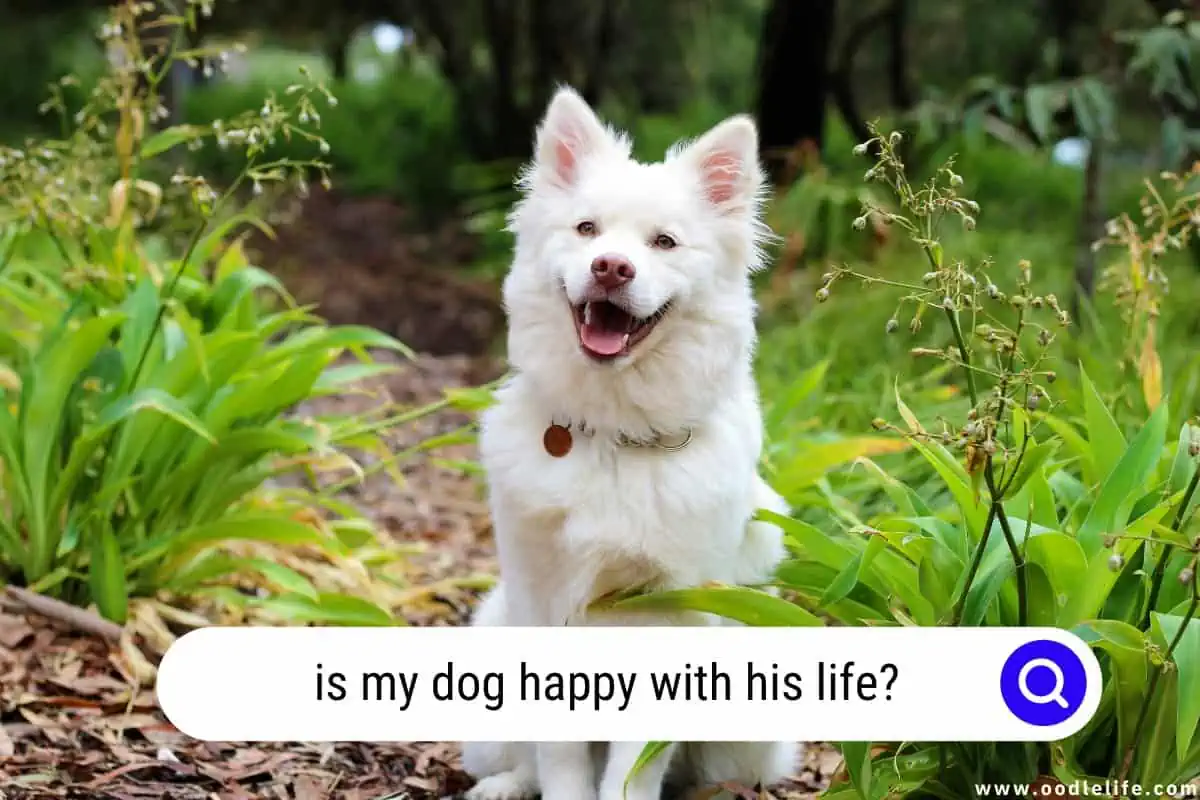
Dogs, just like humans, are individuals with their unique personalities and preferences. While some dogs are naturally more active and outgoing, others may be more relaxed or shy. To determine if your dog is genuinely content with his life, it’s necessary to consider these individual differences along with the general indicators of happiness, such as a wagging tail, soft, relaxed ears and eyes, and an overall playful demeanor.
Understanding your dog’s specific needs and ensuring they are met can greatly contribute to their happiness. Providing a safe environment, regular exercise, proper nutrition, and ample social interaction are just a few ways to help your dog lead a fulfilling life. Keep a watchful eye on their body language, and don’t be afraid to consult a veterinarian or professional trainer for guidance on improving their quality of life and well-being.
Recognizing a Happy Dog
Facial Expression
A happy dog’s facial expression is one of the key indicators of their emotional well-being. Look for characteristics like triangle-shaped soft eyes, which often have a gentle blink. Their gaze should be relaxed, and their eyebrows show no signs of being furrowed or tense.
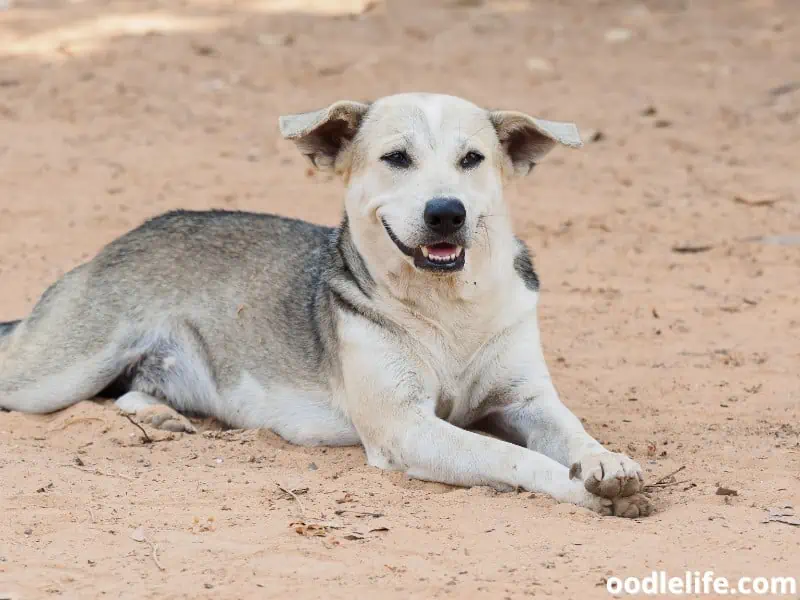
Dogs with floppy ears will have them relaxed, while dogs with pointy ears will also show a similar relaxed posture.
A content pup will have its mouth slightly open, allowing for a relaxed muzzle. It almost appears as if they’re smiling, but without baring their teeth. This canine grin is sometimes referred to as a “Muppet smile” as a lighthearted comparison to the beloved puppet characters.
Body Language
Body language is another vital aspect to observe when assessing a dog’s happiness. A relaxed, wiggly body posture with zero body tension is a promising sign. Their tail should be carried in a relaxed manner, and the wag of the tail should be gentle, not stiff.

Some dogs let their excitement show with a highly entertaining butt wiggle. Their body movements display curiosity and enthusiasm, further indicating that your dog is happy and engaged with whatever they’re experiencing.
Behaviors
A few common behaviors can help identify if a dog is happy. Engaging in play, seeking cuddles, or even showing an eagerness to please are all indicators of a content canine. Additionally, a dog that listens well to commands and can maintain attention is likely in a positive state.

Don’t be surprised if your happy companion greets you with an overjoyed tail wag and a slight wiggle when you walk through the door!
Remember, each dog has its personality, and recognizing a happy dog involves understanding their unique traits and tendencies. By fine-tuning your observational skills, you will become an expert in canine body language and emotions – and, with any luck, you’ll have a happy wagging tail and a “Muppet smile” to greet you every day!
Key Indicators of Happiness
Healthy Appetite
A happy dog will consistently eat well. Maintaining a healthy appetite is a sign that your dog is content and enjoying life. If your canine companion shows enthusiasm during meal times, it’s a good indication that they are satisfied with their life.

However, remember that each dog is an individual, and appetite levels may vary based on factors such as age and activity levels.
Good Sleep Patterns
Just like humans, dogs need their beauty sleep! A happy dog will snooze comfortably, whether it’s with or without their beloved human. If your dog has a regular sleep schedule, it displays their contentment and overall happiness.

Disturbed sleep patterns might indicate stress or discomfort, so keep an eye on how soundly your pup snoozes.
Playfulness
A happy dog will enjoy playtime with you, whether it’s through engaging in a game of fetch or participating in a play bow. They will be eager for interaction and display a relaxed body posture with zero body tension.

Here are some signs of a playful, happy dog:
- Running with a bouncy gait
- Affiliative behavior (wanting to be close) or soliciting attention
- Relaxed, floppy ears
- Soft gaze and relaxed eyebrows
- “Smiling” with an open mouth without baring teeth
Incorporate humor, anecdotes, or analogies in your daily playtime routine to strengthen the bond between you and your pup. Make sure to keep play sessions fun and interactive, just like how humans enjoy catching up with friends over a friendly game of flag football or a hilarious round of charades.
Ways to Keep Your Dog Happy
Regular Walks
Taking your dog for regular walks is not only important for their health, but it also contributes to their happiness. Dogs need daily exercise to release pent-up energy, socialize with other dogs, and explore their surroundings. Daily walks will help your dog stay physically fit and mentally stimulated.
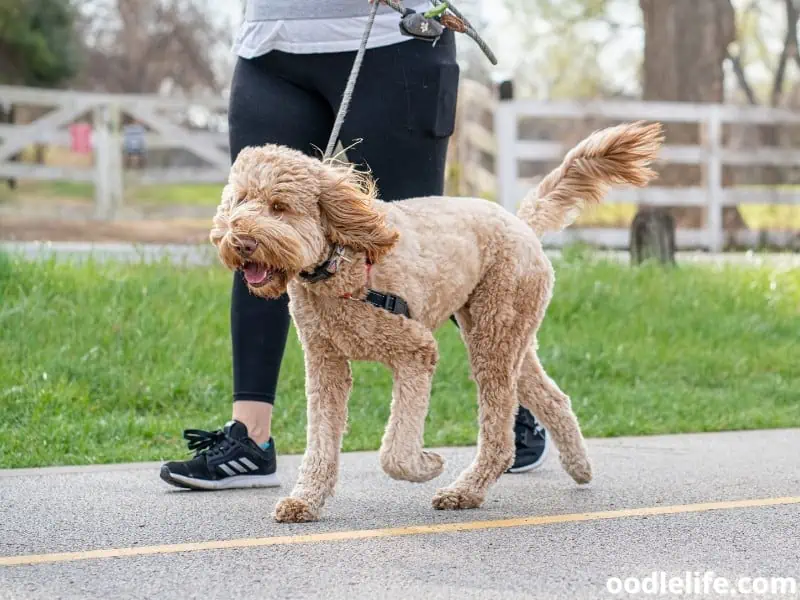
Isn’t it an amazing feeling when you see your pooch wagging their tail and waiting at the door with excitement? So, tie up those shoelaces and grab Fido’s leash, because it’s time for an adventure!
Providing Love and Affection
Showing love and affection to your dog is just as important as providing them with regular walks. After all, who doesn’t love some good cuddles? Establishing a strong bond between you and your dog includes activities like petting, belly rubs, or ear scratches.
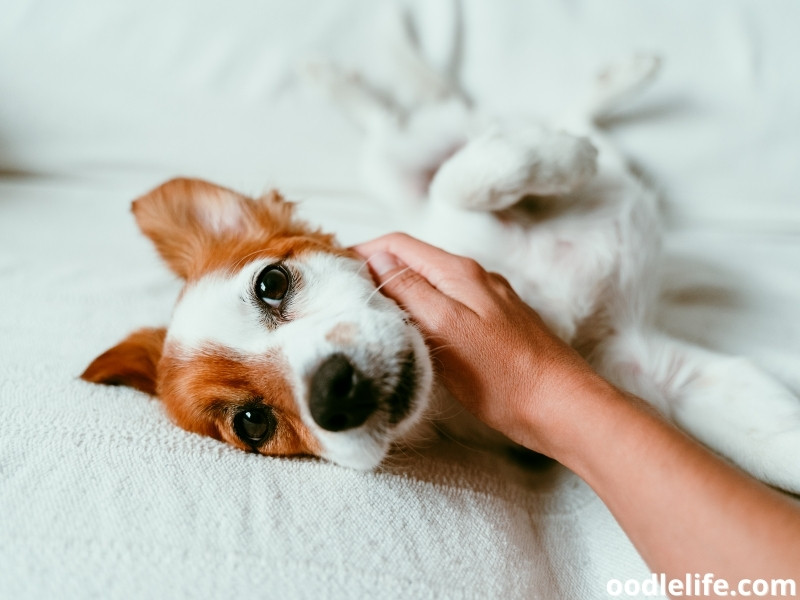
It not only makes your dog feel loved but also helps them feel secure and relaxed. But remember, just like humans, not all dogs enjoy physical contact all the time, so make sure to give your furry friend some space when needed.
Additionally, you can keep your dog’s mind sharp and entertained by providing them with food puzzle toys, such as Kongs. You can also create an obstacle course and have your dog follow a scent to find their favorite treat. This will not only stimulate their mind but will also help to keep them from chewing up your favorite pair of shoes!
It’s fair to say that a happy dog is a happy owner. So, go ahead and shower your furry friend with love and affection, and don’t forget those daily walks! As they say, a walk a day keeps the vet away… or at least, that’s what I’d say if I were a dog.
Signs of an Unhappy Dog
Stress Signals
Recognizing stress signals in your dog can help you identify their overall happiness. Some key stress indicators include a closed mouth, tight ears against their head, avoiding eye contact, and wrinkled skin around the mouth. A stressed dog’s body may also display stiff posture, tail tucking, a slow wag, and cowering.

For example, when a previously relaxed dog suddenly shows these stress signals while encountering people wearing floppy hats, it is beneficial to pay attention and take appropriate steps in comforting your dog.
Physical Changes
Physical changes can also signal an unhappy dog. Dogs may start excessively licking or chewing their paws, which could seem like they’re trying to clean themselves or scratch an itch. Another sign of displeasure is when a normally calm and collected dog begins to bark, lunge, snap, or growl at anything that comes their way – like that innocent-looking fire hydrant they used to walk by without a second thought.
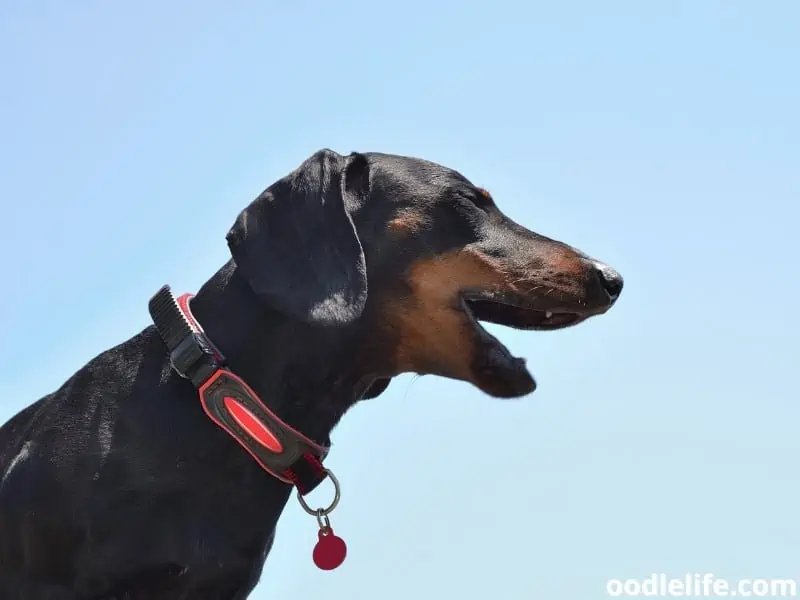
A playful dog is typically a content dog. If your pup lacks enthusiasm for playtime, even when presented with their all-time favorite chew toy, it might be time to look into their unhappiness. On the contrary, happy dogs are likely to be physically active and engage in play, such as doing “play bows” or leaning into their humans for affection.
Remember, a happy dog shows relaxed posture, loose shoulders, and soft eyes. A well-socialized dog may even display pure “flopped-outness” or “wiggliness” around people and other dogs, as if they don’t have a care in the world.
While every pup has their unique quirky behavior, being mindful of potential unhappiness symptoms can help ensure that your furry friend leads a joyous, tail-wagging life.